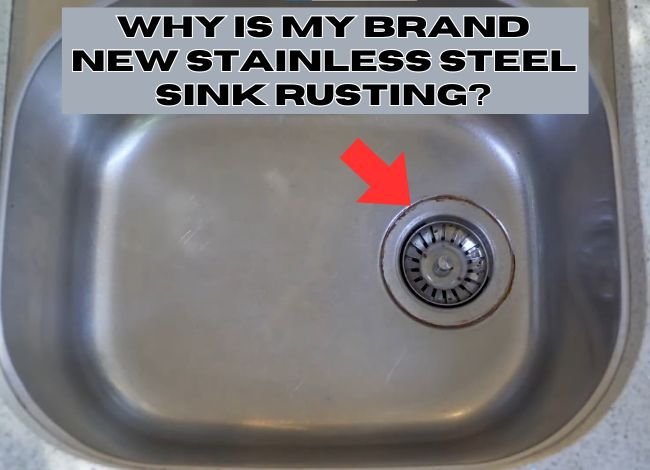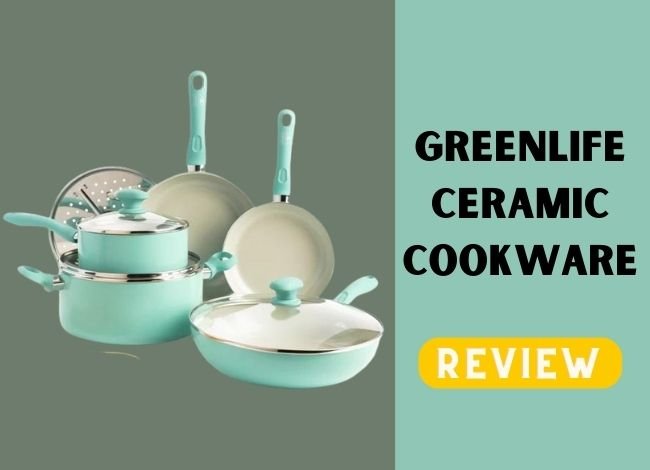Last Updated on January 30, 2024
Stainless steel sinks are a popular choice in kitchens for their sleek appearance and durability. However, many homeowners are perplexed when they notice rust forming on their new stainless steel sinks. Understanding why this happens and how to prevent it is essential for maintaining your sink’s aesthetic and functional quality. This post explores the reasons behind rusting, preventive measures, and solutions for dealing with brown stains and rust on stainless steel sinks.
How Can You Prevent a Stainless Steel Sink from Rusting While Taking All of This into Consideration?
Preventing rust in stainless steel sinks involves a combination of proper maintenance and understanding the material’s limitations. Stainless steel, despite its name, is not entirely immune to rust. It contains chromium, which forms a protective chromium oxide layer that resists rust. However, this layer can be compromised by harsh chemicals, prolonged exposure to water, and physical damage. To prevent rusting, avoid using abrasive cleaners or steel wool. Regularly clean the sink with a soft cloth and mild detergent, ensuring it’s completely dry afterward. Additionally, avoid leaving metal cans or cast iron pans in the sink for extended periods, as they can leave rust stains.
In the Same Way, Why Is My Stainless Steel Sink Becoming Brown?
The brown discoloration in stainless steel sinks is often mistaken for rust, but it’s usually a result of mineral deposits from hard water or contact with certain foods or chemicals. These deposits can cling to the surface, giving a brownish appearance that many misinterpret as rust. It’s important to differentiate between actual rust and these harmless stains. Regular cleaning and drying can prevent these deposits from forming. If your water supply is particularly high in minerals, consider installing a water softener to reduce mineral buildup.
It is Also Possible to Wonder if All Stainless Steel Sinks Rust
Not all stainless steel sinks are equally prone to rusting. The resistance to rust in stainless steel depends on the quality and grade of the material. Higher-grade stainless steel with more chromium and nickel content is less likely to rust. Cheaper stainless steel sinks with lower chromium content might be more susceptible to rusting, especially if not properly maintained. It’s essential to understand the grade and quality of your stainless steel sink to assess its vulnerability to rust.
What is the Best Way to Remove Brown Stains from a Stainless Steel Sink?
A gentle approach removes brown stains from a stainless steel sink. To form a paste, you can create a cleaning solution with baking soda and water. Apply this paste to the stained areas and gently rub it toward the steel grain with a soft cloth or sponge. Rinse thoroughly with water and dry with a towel. For tougher stains, white vinegar can be used. Soak a cloth in vinegar and lay it over the stain for a few minutes before wiping and rinsing. Avoid using harsh chemicals or abrasive materials, as these can damage the sink’s surface.
What is the Best Way to Repair Rusty Stainless Steel?
If your stainless steel sink has developed actual rust, it’s important to address it promptly to prevent further damage. Begin by cleaning the area with a mild detergent and water. Then, use a paste of baking soda and water applied with a soft cloth to scrub the rust gently. A commercial stainless steel cleaner can be used as directed for more stubborn rust. After removing the rust, rinse the area thoroughly and dry it. To prevent future rust, apply a thin layer of mineral oil, which helps to protect the sink’s surface.
What is the Best Way to Clean Oxidized Stainless Steel?
Oxidation on stainless steel, often mistaken for rust, can diminish the aesthetic appeal of your sink. A gentle yet effective cleaning routine is the best way to tackle this. Start by mixing a solution of warm water and mild dish soap. Using a soft cloth or sponge, gently scrub the sink in the direction of the stainless steel grain. For tougher oxidation stains, baking soda mixed with water to form a paste can be an excellent mild abrasive. Apply this paste in the same direction as the grain and rinse thoroughly. Remember, harsh chemicals or steel wool can damage the surface, so stick to gentler methods. Regular cleaning not only removes oxidation but also prevents it from forming.
What is the Best Way to Prevent Water Stains on a Stainless Steel Sink?
Water stains are a common nuisance on stainless steel sinks. These are typically caused by hard water, which leaves behind minerals after evaporation. To prevent these stains, it’s crucial to keep the sink dry. After each use, wipe the sink with a clean, dry cloth. If stains do occur, a solution of vinegar and water can be effective. Apply this solution with a soft cloth, following the grain of the steel, and then rinse and dry the sink. Additionally, consider installing a water softener to reduce mineral deposits in hard water. Regular maintenance not only keeps your sink looking new but also extends its lifespan.
What Can You Do to Prevent Rust from Reappearing?
Preventing rust from reappearing on your stainless steel sink involves regular maintenance and the use of appropriate materials. After cleaning, ensure that the sink is thoroughly dried as moisture is a primary cause of rust. Use a soft cloth to dry the surface completely. To protect the sink further, apply a thin layer of mineral oil using a clean cloth, which acts as a barrier against moisture and contaminants. Avoid leaving metal cans or cast iron pots in the sink for extended periods, as these can leave rust stains. Additionally, ensure that your cleaning agents are non-abrasive and chlorine-free, as these substances can deteriorate the protective chromium oxide layer on stainless steel.
What Causes Rust to Form on Stainless Steel is a Mystery
Stainless steel’s resistance to rust is one of its main selling points, so it can be puzzling when rust appears. The key lies in understanding that stainless steel is resistant but not immune to rust. Factors like exposure to harsh chemicals, water containing high chlorine levels, or contact with iron or steel can compromise the protective chromium oxide layer, leading to rust. Additionally, manufacturing defects or low-quality stainless steel with insufficient chromium can also be prone to rusting. It’s essential to identify the source of rust to address it effectively. Regular cleaning, proper maintenance, and avoiding harsh chemicals are crucial steps in preserving the integrity of your stainless steel sink.
Is it Possible to Use CLR on Stainless Steel?
CLR (Calcium Lime Rust remover) can be a viable option when dealing with rust on stainless steel. However, it’s essential to use it correctly to avoid damaging the surface. CLR is designed to remove tough stains like calcium, lime, and rust from various surfaces, including stainless steel. Before applying CLR, test it on a small, inconspicuous area. You can apply it to the affected area if there’s no adverse reaction. Use a soft cloth or sponge to rub the CLR onto the rust spots gently. Don’t leave it on for too long; a few minutes should suffice. Afterward, thoroughly rinse the area with water and dry it with a clean cloth. It’s crucial to avoid abrasive scrubbers or harsh chemicals as they can scratch or damage the stainless steel surface. Regular maintenance and prompt attention to any signs of rust can keep your stainless steel sink looking new and prolong its lifespan.
What is the Best Way to Buff Away Scratches on Stainless Steel?
Scratches on stainless steel sinks can be unsightly, but there are effective ways to buff them out. The key is to use the right materials and techniques. Start by cleaning the scratched area with a mixture of warm water and mild dish soap. This step will remove any debris and grease, allowing you to see the scratches clearly. After drying the area, gently buff the scratches with a non-abrasive pad or fine-grit sandpaper. Always work in the direction of the stainless steel’s grain to avoid further damage. For deeper scratches, a stainless steel scratch removal kit might be necessary. These kits typically contain a variety of abrasive pads and a lubricant. After buffing, remove the area and apply a stainless steel polish to restore shine. Regular maintenance, gentle cleaning, and the use of protective mats or grids in the sink can help prevent future scratches. Remember, with proper care, stainless steel sinks can maintain their luster and functionality for years.
What is the Best Way to Protect a Sink from Rusting?
Protecting your stainless steel sink from rust involves regular maintenance and the use of appropriate cleaning methods. Firstly, always rinse and dry your sink after use, as standing water, especially if it’s hard water, can cause rust and stains. Secondly, avoid leaving metal cans or cast iron cookware in the sink for extended periods, leading to rust. Using a protective sink grid can prevent direct contact with metal objects. When it comes to cleaning, opt for mild detergents and avoid chlorine-based cleaners or steel wool, which can damage the sink’s protective layer. Applying a thin layer of mineral oil to the sink can provide a protective barrier against rust. Do this monthly to keep the surface in optimal condition. If you notice small rust spots, promptly address them with a gentle cleaner like baking soda and water, followed by a rinse and dry. By adopting these simple habits, you can effectively protect your stainless steel sink from rusting and ensure its longevity and aesthetic appeal.
Is it True That All Stainless Steel Sinks are Prone to Scratching?
While stainless steel sinks are known for their durability and resistance to heat and stains, they are not completely immune to scratching. The likelihood of scratching depends on the quality and finish of the stainless steel. Higher quality stainless steel sinks, often indicated by a lower gauge number, are less prone to scratching due to their thicker construction. The finish also plays a role; brushed or satin finishes can help mask minor scratches better than mirrored finishes. To minimize scratching, avoid using abrasive cleaners or scouring pads. Instead, opt for soft sponges or microfiber cloths. Be cautious with sharp objects and consider using a protective sink grid. Regular cleaning and maintenance can also reduce the risk of scratches. It’s important to embrace that minor scratches are normal and can add to the sink’s character over time. For those who are particularly concerned about scratching, considering a sink with a higher quality grade of stainless steel or a protective finish might be a worthwhile investment.
Why is My Brand New Stainless Steel Sink Rusting?
Experiencing rust in a brand-new stainless steel sink can be perplexing and frustrating. Although stainless steel is known for its rust-resistant properties, rust can still occur under certain conditions. The reasons for rusting can vary from the quality of the stainless steel to environmental factors. This post will explore addressing and preventing rust in your stainless steel sink.
Is it Possible to Remove Rust from Stainless Steel?
Absolutely! Removing rust from stainless steel is achievable with the right approach. The key is to use non-abrasive methods that won’t damage the sink’s surface. One effective way is to create a paste of baking soda and water and apply it to the rusted area. Let it sit for a few hours before gently scrubbing it with a soft brush or cloth. For tougher rust stains, white vinegar or a specialized stainless steel cleaner can be used. Always rinse the sink thoroughly after cleaning and dry it to prevent future rusting. Regular maintenance is crucial in keeping your stainless steel sink looking new.
Is Rust on Stainless Steel a Health Hazard?
While rust in your stainless steel sink can be unsightly, it generally doesn’t pose a significant health risk. Rust is primarily iron oxide, a compound not harmful in small amounts. However, rust can indicate moisture issues, which might lead to bacterial growth if not addressed. Maintaining your sink’s cleanliness is important to ensure it remains hygienic for daily use. If you’re concerned about any potential health risks, consulting a professional for an evaluation and proper cleaning recommendations is advisable.
When it Comes to Removing Chemical Stains from a Stainless Steel Sink, There Are Many Options.
Chemical stains on stainless steel sinks, such as those from hard water, can be stubborn. Fortunately, there are several methods to tackle these. One effective solution is using a mixture of vinegar and water. Vinegar is an acid that helps in breaking down mineral deposits. A paste made from baking soda and water can be used for tougher stains. It’s important to avoid using abrasive scrubbers or harsh chemicals, as they can scratch the stainless steel surface. Regular cleaning with the right products will keep your sink free from chemical stains and maintain its shine.
What is Causing the Rust in My Sink Drain?
Rust in the sink drain could be caused by various factors, including prolonged exposure to water, metallic items left in the sink, or the use of harsh chemicals. Even high-quality stainless steel can rust if it’s constantly in contact with water or abrasive materials. Keeping the sink and drain dry and clean after each use is important. Additionally, avoid leaving metal pots or utensils in the sink for extended periods, as they can contribute to rust formation.
Conclusion
Rust in a stainless steel sink, though unexpected, is usually manageable. Regular maintenance, gentle cleaning methods, and awareness of the causes can significantly prolong the life and appearance of your sink. If rust persists or you’re concerned about potential health risks, don’t hesitate to seek professional advice. Remember, taking care of your stainless steel sink is about aesthetics and ensuring a clean, hygienic kitchen environment.




